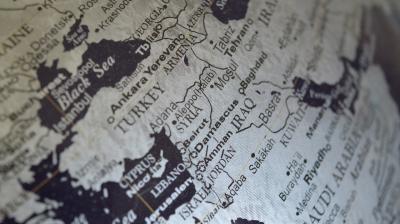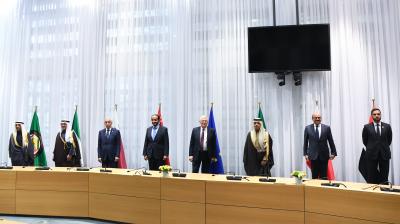Iran's Increasingly Decentralized Axis of Resistance
This commentary has previously been published by War on the Rocks.
After Iran’s allies lost ground in recent elections in Lebanon and Iraq, international observers began asking whether Tehran’s regional influence was slipping. On May 15, Lebanon’s voters denied Hizballah and its allies the majority they had enjoyed over the past 15 years. A few months earlier, Iran’s close allies in Iraq — the Fateh alliance — suffered a much larger blow as its opponents established a clear parliamentary majority against it. Nonetheless, both Hizballah and Fateh’s coalition secured a significantly larger number of votes than their opponents in absolute terms and still managed to steer post-election politics as they desired. These developments certainly reflect new challenges that Iran is facing. But they also portend a new, more decentralized approach to axis management that could help protect Iranian interests in the long run.
Over the years, Iran has been agile in devising tactical responses to regional developments. It supported Iraqis when they were threatened by the Islamic State’s onslaught in 2014 and managed to continue sponsoring Hamas despite the Israeli blockade of Gaza. However, Iran’s fast-growing array of partners, combined with shifting regional and domestic realities, have made it increasingly difficult for Tehran to respond to emerging threats. For example, the Iraqi and Lebanese elections both followed widespread protests in Baghdad and Beirut that called for radical political reform and the expulsion of foreign actors — Iran among them. This has forced some of Iran’s partners to distance themselves either politically or rhetorically from Tehran to retain their domestic legitimacy. And this comes as Iran was already dealing with challenges created by the overextension of its regional network, a weak economy, and divisions within the Shiite community over the doctrinal status of Iranian clerics.
The result is that the “axis of resistance” is now shifting from a hierarchical, Iran-centric network to a decentralized horizontal structure that facilitates greater autonomy for its members. The breakdown of Tehran’s control may well lead to partners taking uncoordinated actions that threaten Iranian interests. But the benefits for Iran and the network remain greater. More autonomy gives Iran the plausible deniability to distance itself from its partners’ provocations while still seeking their support when needed.
Read full commentary here.







